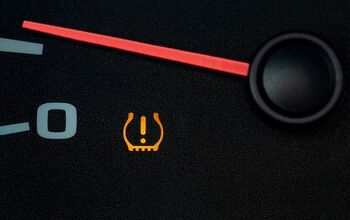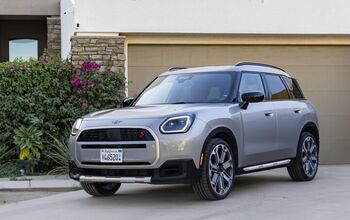Is It Safe to Buy Used Tires?

Look, we get it. Times are tough all around and everyone’s trying to save a dollar. Jimmy’s swimming team registration is due, Jane needs a new stick for hockey, and the back deck is starting to look like Keith Richards after a rough night. And, oh yeah, the family vehicle desperately requires a new set of tires.
For a lot of us, those four rubber hoops on each corner of the car are given only the most passing of thoughts … until it comes time to replace them. Despite stoically doing their duty day in and day out, most people don’t think about until they demand the hoovering of many dollars out of a bank account. This leads to them being the Rodney Dangerfield of car parts: ignored when working, reviled when seeking attention, and generally given no respect.
It doesn’t take a rocket scientist, then, to understand why some folks choose to pick up a set of second-hand tires when replacement time rolls around, especially when it represents significant financial savings on an object they didn’t really want to buy in the first place. But is it a good idea to do so? As it turns out, probably not.
Shop New Tires at PriorityTire.com
Consider for a moment that the only part of your vehicle that actually touches the road are those four fist-sized patches of rubber at each corner. Nothing else – not the brakes, the blind spot warning, nor the fancy automatic braking system – is in physical contact with the pavement. These advanced safety technologies are only as strong as their weakest link. A poor set of tires could be just the ticket to a crash, even if the rest of your car is in perfect working order.
ALSO SEE: Top 15 Best Portable Tire Inflators and Air Compressors
For clarity, we went straight to the folks who know this subject better than anybody. Tom Carter is the Technical Communications at Michelin and has worked in the tire industry for over thirty years. With extensive experience under his steel belts at the Laurens Proving Grounds in South Carolina, the man has probably driven more miles in reverse than I have in forward.
“One of the main issues with buying a used set of tires is the likelihood that the buyer knows little about their history,” Carter explained. “Were they rotated correctly? Have they taken a hard impact like a pothole? Sometimes, it’s tough to determine the true condition of a used tire, especially if it is not inflated.”
Shop New Tires at TireRack.com
This is an excellent point, one your author did not previously consider. The vast majority of second-hand tires are sold loose – that is to say, it’s not mounted on a wheel. In this situation, it can be difficult to see damage on the tire such as sidewall bulges or small leaks. That cheap set of tires might look fine to the naked eye only to reveal safety issues once they are mounted on a set of rims. This scuppers your cheapskate plans, putting you back at square one.
ALSO SEE: Buyer’s Guide: The Best All-Season Tires You Can Buy
There is also the issue of age. Just because a tire is in good physical condition doesn’t mean it is roadworthy. In fact, the U.S. Tire Manufacturers Association (USTMA) says that no tire over 10 years of age should be used on a road-going vehicle. “Ozone and other elements in the atmosphere not only attack metals and upholstery, they attack your tires as well,” said Carter. “Don’t keep your tires longer than 10 years, even if the tread looks good.”
Unlike trees, a person doesn’t need to saw a tire in half to determine its age. There is a DOT code on the sidewall, containing the necessary information to figure out a tire’s date of manufacture. The last four digits of the code contain the week and year that the tire was made. For example, a tire with DOT code ending in 1418 was manufactured in the 14th week of 2018. Any tire with only a 3 digit number at the end was manufactured prior to 2000 and should definitely be discarded.
In addition, there is also the fact that technology is a steadily advancing art, which should drive consideration towards buying tires with the latest developments in rubber compounds and tread patterns. This is especially important given the since the proliferation of sophisticated safety equipment mentioned earlier, such as Automatic Emergency Braking. Absent a good set of tires, a person is – at best – compromising that technology. At worst, it is being wasted altogether.
ALSO SEE: Can You Use Winter Tires All Year?
As with most other areas of life, there are exceptions. A professionally inspected second-hand car from a reputable seller, for example, technically wears a set of used tires. However, if the vehicle is given the green light from a knowledgeable mechanic, there is an excellent chance that the tires are just fine. Same goes for if a shopper is buying a set of non-mounted tires from a person whom they know to perform fastidious levels of maintenance on their vehicles. Chances are if they take good care of their ride, they’ve taken good care of the rubber.
The Verdict: Is It Safe to Buy Used Tires?
But absent of those assurances? You’re likely much better off buying brand new tires, a set that will be able to provide the greatest level of grip while making the most out of your car’s safety systems. After all, the back deck can wait until next year.
ALSO SEE: Buyer’s Guide: The 10 Best Fuel-Efficient Tires and Low Rolling Resistance Tires

Living in rural Canada, Matthew has immersed himself in car culture for over 30 years and relishes the thought of a good road trip. A certified gearhead, he enjoys sharing his excitement about cars and is very pleased to contribute at AutoGuide. Matthew is a member of Automotive Journalists Association of Canada (AJAC).
More by Matthew Guy
































Comments
Join the conversation